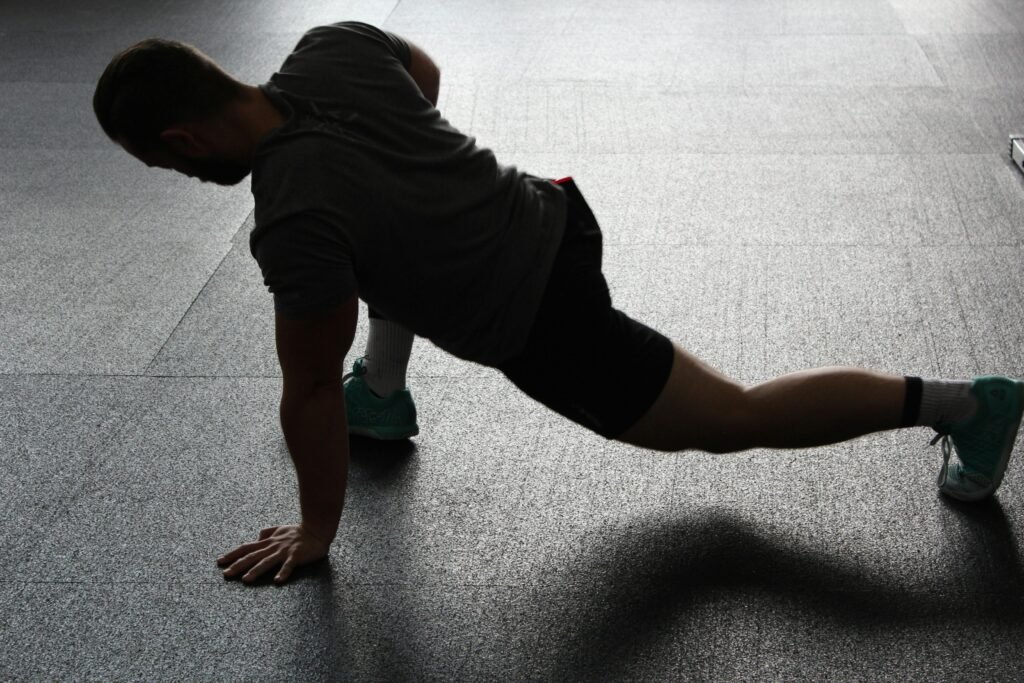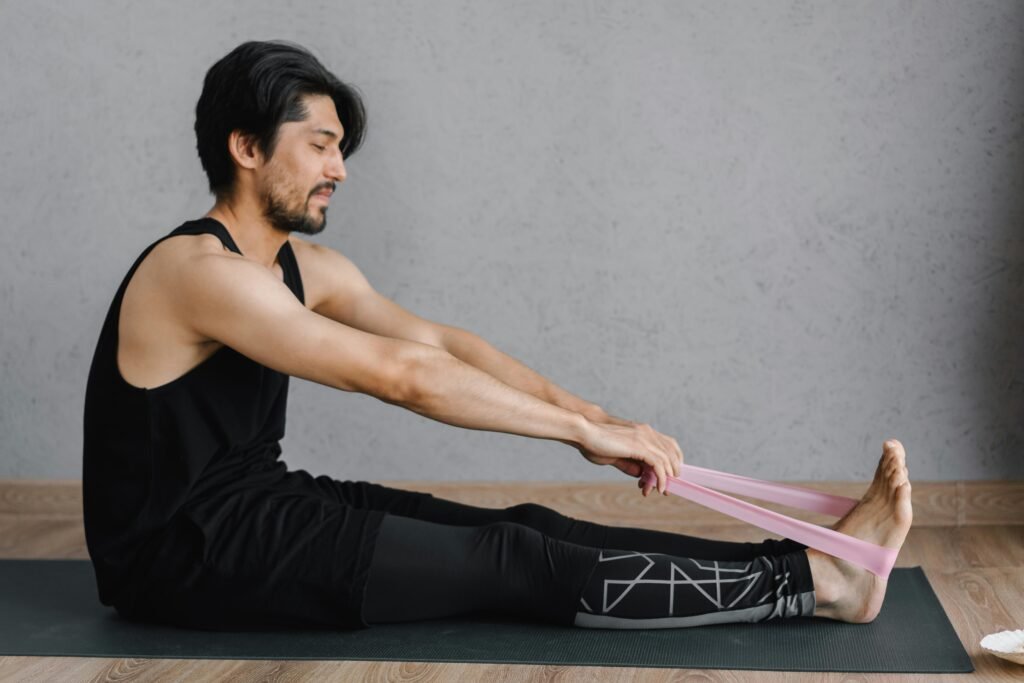Introduction
Welcome to the definitive guide on Reverse Kegel Training, a technique that is sometimes disregarded yet essential for maintaining optimal pelvic health. In this post, we will go over the definition of Reverse Kegel Training, as well as its advantages, methodologies, and frequently asked questions, to give you a comprehensive grasp of this crucial part of pelvic floor exercises.
Reverse Kegel Training is a technique for relaxing and lengthening the pelvic floor muscles, which counteracts the tightening and contracting effects of standard Kegel exercises. Kegels strengthen the pelvic floor, whereas Reverse Kegels relax and stretch these muscles. By implementing Reverse Kegel Training into your pelvic floor regimen, you can alleviate pelvic discomfort, urine urgency, and sexual dysfunction.
One of the primary advantages of Reverse Kegel Training is its potential to improve bladder control and pelvic floor function. Many people suffer from urine incontinence or an overactive bladder as a result of tight pelvic floor muscles. Reverse Kegels can help improve these symptoms by encouraging pelvic floor relaxation and synchronization. Furthermore, Reverse Kegel Training might be especially effective for people who feel pain or discomfort during intercourse since it reduces muscle tension and improves sexual performance.
Incorporating Reverse Kegel Training into your regimen is simple, but it demands attention and commitment. Diaphragmatic breathing, pelvic floor relaxation exercises, and visualization are all techniques that can help you complete Reverse Kegels successfully. It is critical to listen to your body and move slowly, since overdoing it might result in muscular weariness or injury. With patience and determination, Reverse Kegel Training may be an effective strategy for improving pelvic health and general well-being.

Reverse Kegel Training
Reverse Kegel Training is a technique that relaxes the pelvic floor muscles instead of exercising them, as in standard Kegel exercises. While Kegel exercises strengthen the pelvic floor, Reverse Kegel Training works to relieve tension in these muscles, resulting in improved bladder control, sexual function, and general pelvic health.
Incorporating Reverse Kegel Training into your workout program can have various benefits beyond pelvic health. Individuals who intentionally relax the pelvic floor muscles may enjoy less pelvic discomfort, better posture, and increased core stability. Furthermore, because Reverse Kegel Training promotes a more balanced approach to pelvic floor function, it may help avoid pelvic organ prolapse and urine incontinence.
Reverse Kegel Training aims to increase awareness and control of the pelvic floor muscles. Many people suffer from tightness or overactivity in these muscles, which can lead to a range of pelvic health difficulties. Individuals who do Reverse Kegels can learn to intentionally relax and release tension in the pelvic floor, resulting in increased flexibility and function over time.
While Reverse Kegel Training is not as well-known as standard Kegel exercises, it is essential for maintaining pelvic health and preventing dysfunction. Whether you’re experiencing pelvic pain, urine urgency, or sexual discomfort, including Reverse Kegel Training into your daily routine can give relief and boost overall well-being. With determination and consistency, you may use Reverse Kegel Training to improve your pelvic health and lead a more comfortable, meaningful life.

The Importance of Reverse Kegel Training for Pelvic Health
Reverse Kegel Training is essential for preserving pelvic health, particularly for people who have pelvic discomfort, urine incontinence, or sexual dysfunction. Learning to relax the pelvic floor muscles can help relieve stress and discomfort, resulting in a higher quality of life. Reverse Kegel Training is a comprehensive approach to pelvic floor health that addresses muscular strength, flexibility, and synchronization.
Incorporating Reverse Kegel Training into your everyday regimen can provide considerable long-term advantages. Individuals can progressively reduce tension and improve bladder control by practicing relaxation techniques and moderate stretches that target the pelvic floor muscles. This can be especially advantageous for athletes, pregnant women, and people recuperating from pelvic surgery since it prevents injuries and promotes general pelvic stability.
Furthermore, Reverse Kegel Training can improve sexual performance and enjoyment by increasing relaxation and decreasing pelvic floor muscle stiffness. Many people feel discomfort or pain during intercourse as a result of pelvic floor dysfunction; however, frequent Reverse Kegel exercise can improve blood flow to the pelvic area and boost sensation. Overall, Reverse Kegel Training enables people to take charge of their pelvic health and live more fulfilled lives free of discomfort and constraint.
Understanding Pelvic Floor Dysfunction
Pelvic floor dysfunction, defined as tight or weak pelvic floor muscles, can cause a variety of problems, including urine urgency, pelvic discomfort, and sexual dysfunction. Reverse Kegel Training provides a remedy by teaching people how to relax these muscles, restoring balance and function to their pelvic floors. Unlike standard Kegel exercises that strengthen the pelvic floor, Reverse Kegel Training focuses on relaxing and extending these muscles, treating the underlying reasons of dysfunction.
Individuals who include Reverse Kegel Training into their everyday practice might find relief from symptoms related with pelvic floor dysfunction. Individuals might progressively learn to release tension and improve bladder control by practicing mindful relaxation techniques and particular exercises that target the pelvic floor muscles. Reverse Kegel Training can be especially useful for persons suffering from urinary incontinence or frequent urination, as it helps restore normal muscle tone and function.
Furthermore, Reverse Kegel Training might be useful for controlling pelvic pain and discomfort. Many people suffer from persistent pelvic pain problems called pelvic floor tension myalgia or vulvodynia. People who do Reverse Kegels on a daily basis can minimize muscular stress and discomfort, resulting in a higher quality of life and general well-being.
In addition to treating physical issues, Reverse Kegel Training can improve sexual health and intimacy. Individuals who promote relaxation and flexibility in the pelvic floor muscles may feel enhanced sexual pleasure and less pain during intercourse. This can improve physical and emotional connection, resulting in better relationships and more sexual pleasure. Overall, Reverse Kegel Training provides a holistic approach to pelvic health, allowing people to take charge of their health and live more comfortably.
Benefits of Reverse Kegel Training
1. Enhanced Bladder Control
Reverse Kegel Training improves bladder function by minimizing involuntary contractions of the pelvic floor muscles. This can dramatically reduce urine urgency and frequency, resulting in better bladder health. Individuals who do Reverse Kegels on a daily basis can learn their pelvic floor muscles to relax and release tension, resulting in more effective bladder emptying and a decreased sense of urgency.
In addition to increasing bladder function, Reverse Kegel Training can help people with pelvic pain or discomfort. Many pelvic pain diseases, such as pelvic floor dysfunction or interstitial cystitis, are characterized by muscular tension and rigidity in the pelvis. Reverse Kegel exercises can help relieve this strain, reducing discomfort and increasing comfort and mobility.
Furthermore, Reverse Kegel Training can significantly improve sexual function and enjoyment. Individuals who promote relaxation and flexibility in their pelvic floor muscles may experience greater blood flow to the pelvic area, resulting in enhanced arousal and feeling during sexual engagement. This can lead to a more fulfilling and joyful sexual experience, eventually enhancing overall quality of life.
2. Improved Sexual Function
Relaxing the pelvic floor muscles using Reverse Kegel Training can improve sexual pleasure and performance. Individuals who release tension in these muscles may have greater blood flow to the pelvic area, resulting in enhanced arousal and orgasm. Reverse Kegel exercises help to relax and stretch the pelvic floor, which can lead to more comfortable and enjoyable sexual activity.
Incorporating Reverse Kegel Training into a regular fitness regimen can have a major impact on sexual health and intimacy. Individuals who learn to deliberately relax their pelvic floor muscles can lessen muscular tension and pain, resulting in more enjoyable and gratifying sexual encounters. Reverse Kegels can also aid with erectile dysfunction and premature ejaculation by improving blood flow and control in the pelvic area.
Furthermore, Reverse Kegel Training can help with overall sexual performance by enhancing pelvic floor muscle awareness and control. Individuals who do Reverse Kegels can learn to better activate and relax these muscles, improving their capacity to respond to sexual sensations and extending sexual activity. This can lead to increased sexual confidence and satisfaction, making for a healthier and more meaningful sex life.
3. Alleviation of Pelvic Pain
Reverse Kegel Training can help those suffering from pelvic pain disorders including pelvic floor dysfunction or pelvic floor tension myalgia. Learning to relax the pelvic floor muscles can help to lessen tension and pain, allowing for more comfort and movement. Reverse Kegel exercises work the muscles that maintain pelvic floor tone, which helps to reduce symptoms associated with chronic pelvic pain issues.
Incorporating Reverse Kegel Training into a complete pelvic pain treatment regimen can provide considerable long-term advantages. Individuals who use relaxation techniques and modest stretching exercises can progressively relieve tension and increase flexibility in their pelvic floor muscles. This can help to reduce pelvic pain sensations including burning, pressure, and heaviness, thereby increasing quality of life and general well-being.
Furthermore, Reverse Kegel Training can encourage people to take an active part in controlling their pelvic discomfort and facilitating recovery. Individuals who do Reverse Kegels on a daily basis can improve their awareness of their pelvic floor muscles and their ability to respond to pain triggers. This can help to reduce flare-ups of pelvic pain and improve the efficacy of other therapies including physical therapy and medicines. Overall, Reverse Kegel Training is a useful tool for people suffering from pelvic discomfort, offering a natural and non-invasive way to manage symptoms and improve quality of life.
4. Prevention of Pelvic Organ Prolapse
Reverse Kegel Training can help avoid pelvic organ prolapse by encouraging proper pelvic floor function. Individuals who maintain muscular tone and flexibility can limit the possibility of pelvic organs dropping into the vaginal canal, which is a common problem among women, particularly after childbirth. Reverse Kegels target the muscles that support the pelvic organs, strengthening and toning them to prevent prolapse.
Women who are at risk of pelvic organ prolapse may benefit from including Reverse Kegel Training into their normal pelvic floor exercise practice. Individuals can reduce the chance of organ descent by practicing relaxation techniques and mild stretching exercises, which enhance flexibility and resilience in the pelvic floor muscles. This proactive approach to pelvic floor health can assist women in maintaining good pelvic function and avoiding the development of prolapse-related symptoms.
Furthermore, Reverse Kegel Training can help women gain control of their pelvic health and lower their risk of pelvic organ prolapse. Women can enhance muscular coordination and function by being more conscious of their pelvic floor muscles and practicing relaxation techniques, lowering tension on their pelvic organs. This can lead to increased confidence and peace of mind, knowing that they are taking proactive actions to safeguard their pelvic floor health and avoid future difficulties.

5. Support During Pregnancy and Postpartum Recovery
Pregnancy and delivery can cause severe tension on the pelvic floor muscles, resulting in urine incontinence and pelvic organ prolapse. Reverse Kegel Training can help prepare the pelvic floor for delivery while also supporting muscular relaxation and healing during postpartum recovery. Expecting moms who incorporate Reverse Kegel exercises into their prenatal workout program can strengthen and tone their pelvic floor muscles, lowering their risk of problems during labor and delivery.
In addition to training the pelvic floor for childbirth, Reverse Kegel Training can aid women’s postpartum recovery. Following childbirth, many women feel weakening and exhaustion in their pelvic floor muscles, which can lead to urine incontinence and pelvic organ prolapse. Women who do Reverse Kegels can increase muscular relaxation and healing, resulting in a smoother recovery and speedier return to normal pelvic function.
Furthermore, Reverse Kegel Training can encourage women to have an active role in their postpartum recovery and pelvic floor health. Women can help the healing process and lower their chance of long-term issues like pelvic organ prolapse by adopting relaxation techniques and mild stretching exercises. This proactive approach to pelvic floor health can help women restore confidence in their bodies and have a more comfortable transition into parenthood.
6. Enhanced Athletic Performance
Athletes, particularly those who engage in sports such as weightlifting, cycling, or running, might benefit from reverse Kegel training to improve pelvic floor function. Athletes can improve their performance and lower their risk of pelvic floor injuries by working on muscle coordination and flexibility. Reverse Kegel exercises work the muscles that stabilize the pelvis during physical activity, assisting athletes in maintaining optimal alignment and support.
Reverse Kegel Training can assist athletes gain greater awareness and control over their pelvic floor muscles. Relaxation methods and simple stretching exercises can help athletes avoid muscular tension and stiffness, which can lead to diminished mobility and an increased risk of injury. This proactive approach to pelvic floor health can help athletes perform at their peak while reducing the chance of setbacks related to pelvic floor dysfunction.
Furthermore, Reverse Kegel Training can provide athletes a competitive advantage by increasing their capacity to create power and strength from their pelvic floor muscles. By encouraging relaxation and flexibility in these muscles, athletes can achieve optimum muscle recruitment and coordination, resulting in more efficient movement patterns and higher performance output. Whether they’re lifting weights, riding long distances, or sprinting on the track, athletes can benefit from implementing Reverse Kegel Training into their training regimen to improve pelvic floor function and overall athletic achievement.
7. Overall Well-being
Reverse Kegel Training promotes relaxation and reduces stress, in addition to providing particular health advantages. Individuals who include these exercises into their everyday routines will feel more at ease, confident, and energized. Reverse Kegels provide a unique chance to connect with the body, cultivating mindfulness and awareness that goes beyond physical wellness.
In addition to physical advantages, Reverse Kegel Training can improve mental and emotional health. Individuals can relieve stress and anxiety by adopting relaxation techniques and focusing on breath awareness while performing Reverse Kegels, producing a sense of serenity and inner peace. This is especially useful for people who have stress-related pelvic floor dysfunction, such as pelvic pain or urine urgency, because it helps to interrupt the cycle of muscular tension and discomfort.
Furthermore, adding Reverse Kegel Training into a regular self-care regimen can improve general well-being and contentment. Individuals who take the time to care for their pelvic floor muscles and induce relaxation might develop a stronger feeling of body awareness and appreciation. This can result in more self-esteem and confidence, as well as a stronger connection to one’s bodily and emotional needs. Overall, Reverse Kegel Training provides a comprehensive approach to well-being, addressing not only physical but also mental and emotional health.
HAVE A BLESSED DAY OR NIGHT!!!!!

